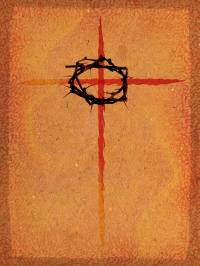2020 Olympic Games – in Mexico?
Hey look! The city of Monterrey, Mexico wants to host the 2020 Summer Olympics! Of course, they face some pretty fierce competition – Toronto Canada wants the games too. 😉
Via ¡Pure Vida!
Hey look! The city of Monterrey, Mexico wants to host the 2020 Summer Olympics! Of course, they face some pretty fierce competition – Toronto Canada wants the games too. 😉
Remember our mayor (alcalde), who was arrested and put in jail, because of suspected involvement in organized crime?
Well, he’s still in jail. But meanwhile, his name was also on a ballot. He was trying to win an internal party election – the political party PRD – to run for the Mexican congress.
This election had to go on without him, since he’s in jail.
But guess what?
He WON.
That’s right, he is now the PRD’s official candidate to run for congress in this district!
I wonder how high up in government you can get while you’re still in jail?
What do you think about that?
There certainly hasn’t been a lot of good news coming out of Mexico in the last few weeks, so it probably shouldn’t be a surprise that when Ixtapaluca makes the news, it’s not good.
Our Municipal President (ie the head guy in Ixtapaluca), Mario Moreno Conrado, was arrested yesterday outside of his home here in Ixtapaluca. He’s under investigation by SIEDO, an official organization that monitors organized crime. Though I haven’t heard official reports, it sounds like the arrest was made due to links with organized crime such as kidnappings and drug trafficking.
Just another reminder to pray for Mexico, the leadership here, and the church here.
 |
I recently finished reading Pierced for Our Transgressions: Rediscovering the glory of penal substitution by Steve Jeffery, Mike Ovey, and Andrew Sach. It’s a thorough look at this aspect of what God accomplished at the cross.
I don’t know if it’s been discussed much where you are, but in many parts of the world the idea of penal substitution, the concept that Jesus took our punishment on the cross, has been a big topic of conversation. This book comes from the United Kingdom, where challenges to penal substitution have been very much in the media in the last few years.
Of course, this is something we all should be thinking about. As the authors show, the idea of penal substitution has been taught by the church for 2000 years, and is key to our understanding of salvation. If there’s anything worth meditating on, this would have to be on your list! And this book is not only one way to think it through, but a great reference to keep handy.
The authors look at key Bible passages, how this doctrine fits with theology, penal substitution from a pastoral perspective, historic texts, and they also answer various arguments against certain aspects of penal substitution.
I especially found the last appendix interesting, where the authors talk to preachers and teachers about the illustrations we use to explain what happened at the cross.
Obviously no illustration is "perfect". The Bible uses illustrations that only explain certain aspects of the cross. For example, He was led as a lamb to the slaughter, and as a sheep before its shearers is silent, so He opened not His mouth (Isa 53:7). This illustration is intended to show how Jesus was submissive, how He didn’t fight his accusers. However, Jesus wasn’t a passive victim – He was determined to go to the cross. In that way the illustration breaks down – but it’s only intended to illustrate one aspect of Jesus’ actions.
However, some illustrations we use are terribly flawed, and give a wrong idea completely. For example, maybe you’ve heard the illustration of the Bird Cage, where essentially Jesus pays a price to Satan to set free those tormented by sin. Of course, the Bible says nothing about Satan being paid. Instead, Satan is conquered (Gen 3:15; Col 2:15) , and it’s to God the price of justice must be paid (Gal 3:13; Rom 5:8-10).
The authors give these suggestions for evaluating illustrations. An illustration could be used even if it doesn’t answer each point, but we should be clear about what aspect of a Bible truth we are trying to teach, and be sure that people won’t get confused.
Of course the book explains each of these in more depth, but I’ll let you get the book yourself and read more!

Many people are surprised to hear Mexico talked about as a war zone. But conflicts in the state of Oaxaca, as well as the war with drug cartels, are not news to the people living here. Little by little, the world is taking notice.
The Los Angeles Times recently put up a page summarizing the latest news on the drug war in Mexico. Taking a look at the page, you’ll see it’s not small news – since the CBC article was published…
Now I don’t write this so you’ll fear for our safety – that’s in God’s hands as always. But I do want to let you know what people are thinking about here, and this is a big one.
Everyday the newspapers bring news of violence, executions, government officials suspected of corruption, kidnappings, and a government trying to deal with it all. Just a few days ago I heard another report – that the three most dangerous countries for journalists are – Iraq, India and Mexico!
Of course we believe that there is Good News that can bring people hope and change lives. That should be your prayer for the millions of Mexico (roughly 110,600,000 people live in Mexico now).
But we also need to pray for peace and justice (1Tim 2:1-4). Though fear can drive people to the Lord, the violence can also hinder the progress of the Gospel (humanly speaking!), and people need to hear the Gospel before they can respond (Rom 10:11-17).
So as you remember Mexico in 2009, pray that God would bring peace and justice, and that the Gospel would spread as never before. Mexico needs your prayers – Remember Mexico!
Thanks to ¡Pure Vida! for the link to the LA Times article.
What follows is a 2-3 minute video of Hannah’s school Christmas program. It’s going to be a little hard to see what’s going on, since it was a little dark for my little free digital camera. 😉 But let me tell you a little about what you will see.
Hannah is in the first couple of songs, first with her class, and then singing "We Wish You A Merry Christmas" with her whole class. Then she’s done!
Edit: Forgot to tell you – her main song was “El Burrito de Belén” – the donkey of Bethlehem. It’s about someone urging their donkey to hurry because they’re going to Bethlehem to see Jesus.
Interwoven throughout the rest of the program was a pastorela. If you’re not familiar with Mexican Christmas traditions, you may be shocked to discover that the main characters were Lucifer and two of his demons! Devils are a common part of the Christmas story here – the bad guys, who are always lurking in nativity scenes.
You’ll also hear some traditional Mexican Christmas music, just brief clips.
Finally, with a whiplash-inducing change of pace, the program ended with an English praise and worship song – Who is like the Lord? Stand up, and give Him the praise!
Without further ado, here it is…
[Edit: Sorry, had a little trouble with the video, but it should be working now]